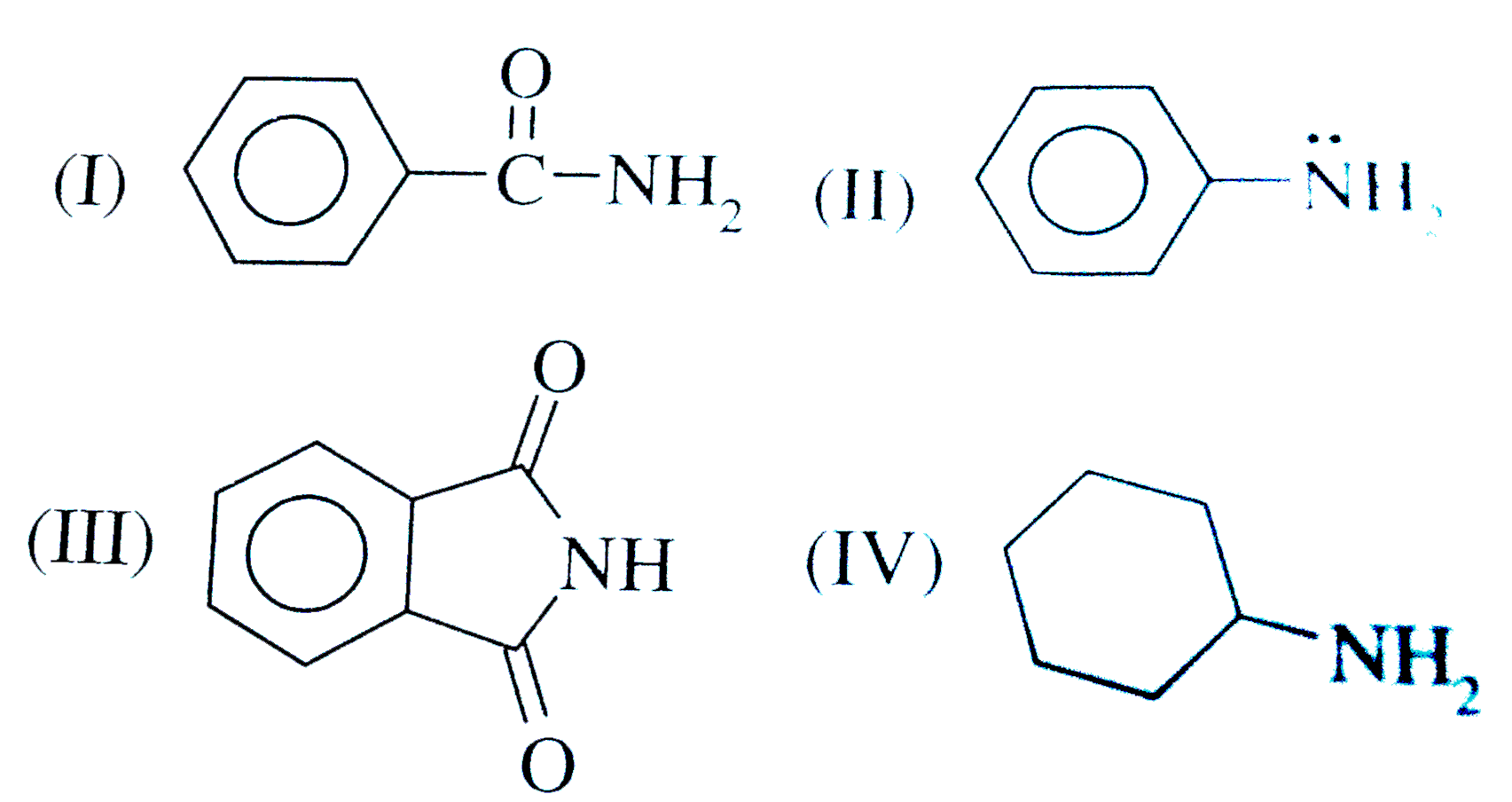Arrang the anions (p) −CH3,(q)−NH2,(r)OH−,(s)F−, in decreasing order of their basic strength .
p>q>>r>s
q>p>r>s
r>q>p>s
r>p>q>s
The correct Answer is:A
To arrange the anions −CH3,−NH2,OH−,F− in decreasing order of their basic strength, we need to analyze their ability to accept protons. The stronger the base, the more readily it will accept a proton.
1. Identify the Conjugate Acids:
- For −CH3 (methyl anion), the conjugate acid is CH4 (methane).
- For −NH2 (amide ion), the conjugate acid is NH3 (ammonia).
- For OH− (hydroxide ion), the conjugate acid is H2O (water).
- For F− (fluoride ion), the conjugate acid is HF (hydrofluoric acid).
2. Determine the Strength of the Conjugate Acids:
- The strength of acids can be compared based on their ability to donate protons. The stronger the acid, the weaker its conjugate base.
- The order of acidic strength is:
- CH4<NH3<H2O<HF
- This means CH4 is the weakest acid and HF is the strongest acid.
3. Relate Acid Strength to Base Strength:
- Since stronger acids have weaker conjugate bases, we can deduce the order of basic strength from the order of acidic strength:
- −CH3 is the strongest base (weakest acid),
- −NH2 is the next strongest,
- OH− follows,
- F− is the weakest base (strongest acid).
4. Final Order of Basic Strength:
- Therefore, the order of decreasing basic strength is:
−CH3>−NH2>OH−>F−
Conclusion:
The final arrangement of the anions in decreasing order of their basic strength is:
−CH3>−NH2>OH−>F−
- For −CH3 (methyl anion), the conjugate acid is CH4 (methane).
- For −NH2 (amide ion), the conjugate acid is NH3 (ammonia).
- For OH− (hydroxide ion), the conjugate acid is H2O (water).
- For F− (fluoride ion), the conjugate acid is HF (hydrofluoric acid).
- The strength of acids can be compared based on their ability to donate protons. The stronger the acid, the weaker its conjugate base.
- The order of acidic strength is:
- CH4<NH3<H2O<HF
- This means CH4 is the weakest acid and HF is the strongest acid.
- Since stronger acids have weaker conjugate bases, we can deduce the order of basic strength from the order of acidic strength:
- −CH3 is the strongest base (weakest acid),
- −NH2 is the next strongest,
- OH− follows,
- F− is the weakest base (strongest acid).
- Therefore, the order of decreasing basic strength is:
−CH3>−NH2>OH−>F−
The final arrangement of the anions in decreasing order of their basic strength is:
−CH3>−NH2>OH−>F−
Similar Questions
Knowledge Check
Arrange the anions (p)¯¯¯CH3,(g)¯¯¯¯NH2,(r)OH−,(s)F− in decreasing order of their basic strength
Ap>q>r>sBq>p>r>sCr>q>p>sDr>p>q>sThe nucleophilicities of CH−3,NH−2,OH−andF− decrease in which order ?
ACH−3>NH−2>OH−>F−BOH−>NH−2>CH−3>F−CNH−2>OH−>CH−33>F−DCH−3>OH−>F−>NH−2Consider the species.
(I) θOH (II)CH3−ΘO (III)ΘCH3 (VI)ΘNH2
Arrange these nucleophilic species in their decreasing order of nucleophilicity :AIII>IV>I>IIBII>I>II>IVCI>II>III>IVDIII>I>II>IV
Arrange the following in the order as mentioned :
+CH3CH3+CH2,(CH3)2CH+,(CH3)3+ C carbocations in the order of increasing reactivity,
View SolutionCH3−OH∣CH−O∣∣C−CH2−CH3 will respond to
View SolutionConsider the following carbanions
(i)CH3−ӨCH2 (ii)CH2=ӨCH (iii)CH≡ӨC
Correct order of stability of these carbanions in decreasing order is
View SolutionConsider the following :
" "underset((I))(CH_(3)CH_(2)NH_(2))," "underset((II))(CH_(3)overset(overset(O)(||))(C)NH_(2))," "(##GRB_HP_JEE_ORG_CHE_C01_E01_028_Q01.png" width="80%">
Correct order of their basic strength is :
View SolutionDifferent hydrogen in
ACH3CH=BCH−CCH2−DCH2−ECHF(CH3)2
are represented by alphabets. Arrange them in decreasing order of reactivity towards radical substitution.
View Solution
